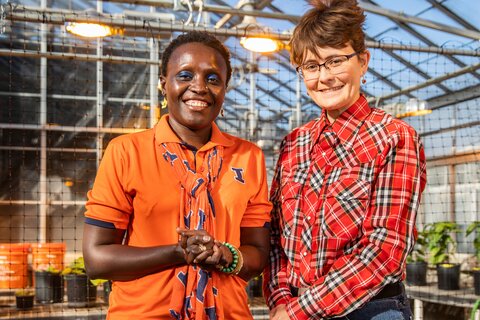Plants produce a range of chemicals known as volatile organic compounds that influence their interactions with the world around them. In a new study, researchers at the University of Illinois Urbana-Champaign investigated how the type and amount of these VOCs change based on different features of tomato plants.

The smell of cut grass is one of the defining fragrances of summer. Smells like that are one of the ways plants signal their injury. Because they cannot run away from danger, plants have evolved to communicate with each other using chemical signals. They use VOCs for a variety of reasons: to help prepare their own defenses, to warn each other of threats, to recruit beneficial soil microbes that can help plants grow, and to alert insect predators that there is a pest chewing on that plant’s leaves.
“When a caterpillar chews on a leaf, the plant sends out a signal that calls out to the caterpillar’s predators. It’s like a billboard that tells them where lunch is,” said Erinn Dady, a graduate student in the Ngumbi lab.
Studying the factors that influence VOC emissions, therefore, is key to understanding plant health. In the past, other studies have looked at how soil microbes like arbuscular mycorrhizal fungi or caterpillars or the variety of tomato plant can influence VOCs. In the current study, the researchers studied the collective influence of all these factors on plant chemistry using four tomato varieties—two heirlooms and two hybrids.
“Previous studies looked at tomato varieties that are grown conventionally at a massive scale for processing, and are not usually grown by small farmers, so we decided to ask Illinois farmers what they grow. Based on their feedback, we chose tomato varieties that are commonly grown in central Illinois,” Dady said. The hybrids used were Mountain Fresh and Valley Girl, and the organic heirlooms were Amish Paste and Cherokee Purple.
...